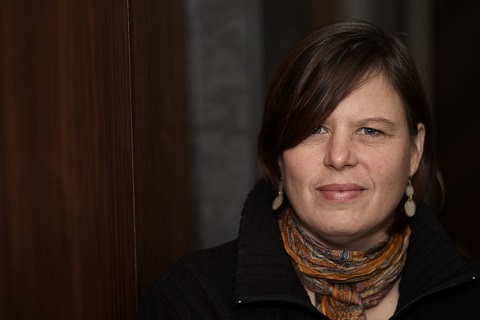Bear wrestling, street fighting, freak shows, carnies and the devastating effects of war. Kathryn Kuitenbrouwer weaves these together masterfully in her latest novel All the Broken Things.
Kuitenbrouwer (MA 2013) first read about bear wrestling circuits in a town newspaper when a 463-pound black bear mauled his trainer’s companion to death. The practice was a dark part of Ontario’s history – which lasted until 1976 when bear wrestling was outlawed – that she didn’t know existed. But the greatest shock was an unrelated, but equally surprising piece of information that she came across during her research: Agent Orange, a highly toxic herbicide used during the war in Vietnam, was also manufactured in Elmira, Ontario. Slowly, two seemingly different concepts became part of the same story. “I wasn’t sure how they would fit together, but I had a strong intuition that I could make it work,” says Kuitenbrouwer, who is pursuing a PhD in English literature at U of T.
Bo, a 14-year-old boy from Vietnam, is recruited by a carnival worker who raises and trains bears for a wrestling circuit. But the carnival boss develops a keen interest in Bo’s sister, Orange, and sees her as another oddity for his freak shows. Because her parents were exposed to Agent Orange while she was still in her mother’s womb, Orange was born with congenital disabilities. The book is a sort of atonement for Canada’s involvement in the production of Agent Orange, says Kuitenbrouwer, but it also explores the human capacity for love and acceptance.
Many tragic events, such as the death of Bo’s father, have left the family broken. The title itself derives from the idea that there are some particularities that cannot be “fixed” – but that there is also a pride in broken things. “It’s recognizing that it’s okay to not be completely whole.”
“The novel becomes more about a way of seeing and being seen,” says Kuitenbrouwer. “It was important for me to see Orange as a person and represent her humanity authentically – she’s a victim of Agent Orange, yes, but that doesn’t define her. This is something that Bo discovers as he learns to see his sister, and even himself, in a new light.”
With the intent of mythologizing her Junction neighbourhood, Kuitenbrouwer takes the reader on a journey through areas such as the Canadian National Exhibition, Humber River and High Park. She draws upon the Canadian literary theme of reuniting with wilderness in the relationship between Bo and Bear, a cub that he’s been given to train. Together, they hide out in High Park to avoid the authorities and the carnival worker, who wants his bear back.
“I want people to be moved, but I also want them to have fun with their imaginations,” says Kuitenbrouwer. “Someone once wrote a note to me saying that they looked for bears in High Park after reading my novel. That’s what I want – for people to walk away with this magical sense that bears can be roaming around Toronto.”
Read an excerpt from Kathryn Kuitenbrouwer’s “All the Broken Things.”
Excerpted from All the Broken Things by Kathryn Kuitenbrouwer. Copyright © 2014 by Kathryn Kuitenbrouwer. Excerpted by permission of Random House of Canada Ltd. All rights reserved.






